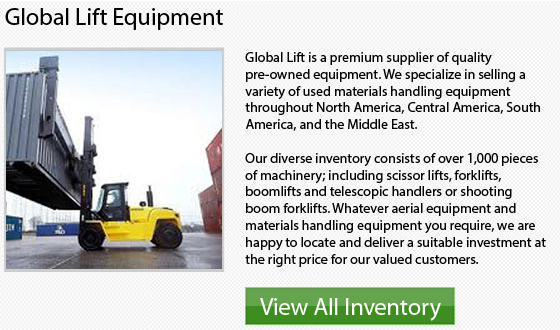
Here are add-ons that are really helpful for narrow aisle lift trucks:
Side shift: The side shift option permits the movement of the load laterally without having to move the truck. This enables loads to be accurately placed.
Tilt mast: The tilt mast option allows the forks to shift forwards and backwards. This is great in situations where loads aren't entirely level. To gain more stability while moving a loaded truck, the mast can be tilted backwards.
Extendable forks: Extendable forks help the reach of a lift truck to allow for the stacking of pallets one in front of the other. This is called double deep loading.
Operator platforms: Operator platforms enable some NA forklifts to lower and raise the operator whilst the forks are being lowered or raised. This offers utmost visibility and control when handling cargo at heights of 6 to 9 meters.
Forklift on a Ramp
Operators have to be properly trained and must be tested and certified. It is very vital for anyone using a forklift to be educated regarding safety rules and concerns. Operators have to understand how to adjust in situations where the weight of the load changes the center of gravity or on uneven surfaces. Safety guidelines cover the safe operation of a lift truck on a ramp, which is always occurring because the driver would normally need to drive down and up ramps to unload and load containers.
Guidelines for Using a Lift Truck on a Ramp
1 Drive slowly while approaching a ramp and while driving down and up the ramp. The possibility of mishaps is increased when driving at high speeds since this can upset the machine's center of gravity.
2 Drive the forklift in reverse when moving up an incline on a ramp while not carrying a load.
3 Drive forward while moving down an incline on the ramp with no load.
4 When moving down or up a ramp when carrying a load, tilt the forks back a little to shift the load's center nearer the front of the machine.
5 Drive forward up a ramp while carrying a load to make the load more steady.